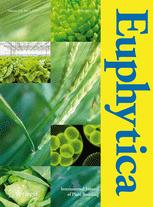Ver ítem
- xmlui.general.dspace_homeCentros e Institutos de InvestigaciónCICVyA. Centro de Investigación en Ciencias Veterinarias y AgronómicasInstituto de BiotecnologíaArtículos científicosxmlui.ArtifactBrowser.ItemViewer.trail
- Inicio
- Centros e Institutos de Investigación
- CICVyA. Centro de Investigación en Ciencias Veterinarias y Agronómicas
- Instituto de Biotecnología
- Artículos científicos
- Ver ítem
Seed dormancy QTL identification across a Sorghum bicolor segregating population
Resumen
Pre-harvest sprouting (PHS) in Sorghum bicolor is one of the main constrains for its production in the central region of Argentina, as grain maturation often coincides with rainy or high environmental humidity conditions. The obtention of more dormant genotypes with higher PHS resistance has always been a desirable trait for breeders but the typical quantitative nature of seed dormancy makes its manipulation difficult through classical breeding.
[ver mas...]
Pre-harvest sprouting (PHS) in Sorghum bicolor is one of the main constrains for its production in the central region of Argentina, as grain maturation often coincides with rainy or high environmental humidity conditions. The obtention of more dormant genotypes with higher PHS resistance has always been a desirable trait for breeders but the typical quantitative nature of seed dormancy makes its manipulation difficult through classical breeding. Dissecting this quantitative variability into quantitative trait loci (QTL) is a main concern especially in cereal species.
In this work, a sorghum segregating population including 190 families was genotyped with microsatellite markers and the SbABI5 candidate gene. A genetic map encompassing 96 markers and a total length of 1331 cM was built. Seed dormancy was phenotyped in F3 and F4 panicles in two contrasting Argentinean environments (Castelar and Manfredi).
Six seed dormancy QTL for mature grains were identified (qGI-1, qGI-3, qGI-4, qGI-6, qGI-7 and qGI-9) with the aid of QTL Cartographer and QTLNetwork, three of them (qGI-3, qGI-7 and qGI- 9) being co-localised by both approaches. No epistasis was detected for the identified QTL but QTL-byenvironment interaction was significant for qGI-7 and qGI-9. Interestingly, seed dormancy candidate genes SbABI3/VP1 and SbGA20ox3 were located within qGI-3, which makes them noteworthy candidate genes for this QTL.
[Cerrar]

Autor
Cantoro, Renata;
Fernandez, Luis German;
Cervigni, Gerardo Domingo Lucio;
Rodriguez, María V.;
Gieco, Jorge Omar;
Paniego, Norma Beatriz;
Heinz, Ruth Amelia;
Benech-Arnold, Roberto Luis;
Fuente
Euphytica 211 (1) : 41–56. (September 2016)
Fecha
2016
ISSN
0014-2336 (Print)
1573-5060 (Online)
1573-5060 (Online)
Formato
pdf
Tipo de documento
article
Palabras Claves
Derechos de acceso
Restringido
 Excepto donde se diga explicitamente, este item se publica bajo la siguiente descripción: Creative Commons Attribution-NonCommercial-ShareAlike 2.5 Unported (CC BY-NC-SA 2.5)
Excepto donde se diga explicitamente, este item se publica bajo la siguiente descripción: Creative Commons Attribution-NonCommercial-ShareAlike 2.5 Unported (CC BY-NC-SA 2.5)

